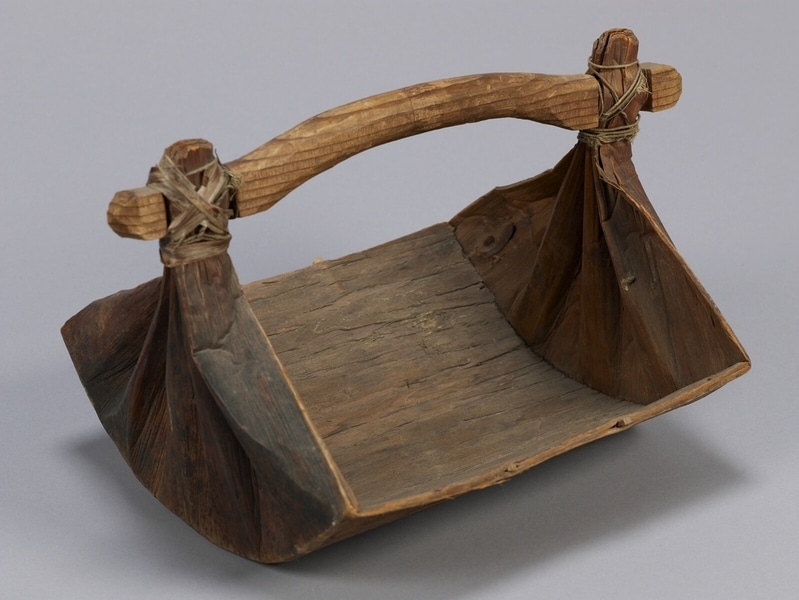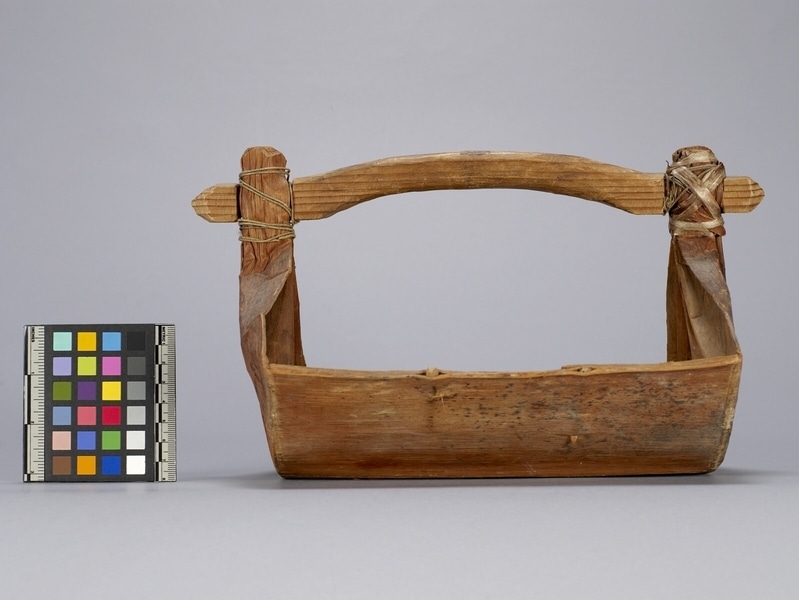Canoe Bailer Item Number: A3398 from the MOA: University of British Columbia


Description
Cedar bark canoe bailer with curved wooden handle. The outer bark has been removed from each end where the bark has been folded up and pleated. The ends have been secured to the carved wooden handle with wire and cotton, then covered with strips of bark. The only remaining outer bark is located on the inside surface of the bailer.
History Of Use
Canoe bailers are used to remove excess water out of the bottom of canoes. Barnett notes: "The implement was effective as a scoop rather than as a dipper, and as such could be manipulated rapidly. The Cowichans and Nanaimo added a large wooden ladle for bailing (1955:116)."
Cultural Context
water travel
Specific Techniques
Canoe bailers are made from rectangular pieces of cedar bark. The bark is harvested from living trees in the spring when the sap is running, usually between May and June. A prayer, and sometimes an offering, is made to the tree for the gift of its skin. An incision is made with an axe, or other bladed implement, and the bark is peeled off by pulling from side to side. It is better to peel the tree this way, because it will result in a wider piece. If you pull straight back from the tree the bark will quickly narrow to a thin strip. Only the width of two hands is taken so that no harm will be done to the tree. The canoe bailer is made from a short rectangular piece, and the outer bark is removed from the end portions. The pliable ends are pleated and secured to a handle with strips of cedar bark or some other type of twine.
Item History
- Made in British Columbia, Canada
- Owned by Emily Carr
- Owned by Mrs. N. Cheney before February 1951
- Received from Mrs. N. Cheney (Donor) during February 1951
What
- Name
- Canoe Bailer
- Identification Number
- A3398
- Type of Item
- bailer
- Material
- cedar bark, metal, wood and cotton fibre
- Manufacturing Technique
- carved and pleated
- Overall
- height 19.5 cm, width 30.5 cm, depth 21.5 cm
Who
- Culture
- Coast Salish
- Previous Owner
- Emily Carr and Mrs. N. Cheney
- Received from
- Mrs. N. Cheney (Donor)
Where
- Holding Institution
- MOA: University of British Columbia
- Made in
- British Columbia, Canada
When
- Ownership Date
- before February 1951
- Acquisition Date
- during February 1951
Other
- Condition
- good
- Current Location
- Case 7
- Accession Number
- 2136/0001